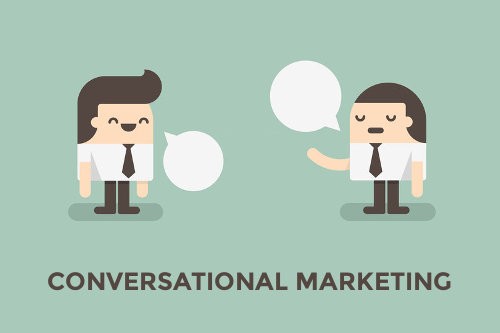
Businesses use conversational marketing to have real-time conversations with prospects and customers. This usually occurs on a website, mobile app, or social media page. The use of messaging apps like Facebook Messenger and WhatsApp for social media marketing is also growing.
Table of Contents
- Why is Conversational Marketing Important?
- How to Measure Conversational Marketing Benefits
Conversational marketing has two methods:
- Live chats
- Automated chat
And Why is Conversational Marketing Important?
Conversational marketing is vital now that consumers expect instant responses. They don’t have time to talk on the phone or wait for an email response. Using a marketing automation chatbot, companies can assist customers in real-time.
Conversational marketing also aims to reach customers where they spend their time. That’s why many businesses use messaging apps like Facebook Messenger or Slack for social media marketing.
Conversational marketing improves customer experience, leads generation, and CRO strategies.
Conversational marketing is used for:
- Build customer trust
- Improve customer experience
- Reducing wait times
- Responding quickly to customer concerns
- Getting customer feedback and acting on it
- Quickening the sales funnel
- Aiding conversion rate optimization
Given the many advantages of conversational marketing, it makes sense for businesses to use it in their digital marketing campaigns. Customers feel more satisfied and cared for when they can contact you at any time.
On the business side, it allows you to increase sales. Customers who hesitate to click the “Buy” button have doubts. With conversational marketing, you can instantly answer a customer’s questions and persuade them to buy.
How to Measure Conversational Marketing Benefits
Businesses using conversational marketing may not be aware of the success metrics. Like any marketing campaign, you need to know the results.
Why isn’t my chatbot doing anything? Is it increasing sales? What does chatbot marketing do?
Experts suggest these metrics for conversational marketing:
- Sales Cycle Duration
- Goal Completion Rate
- Net Promoter Score
1. Sales Cycle Duration
Your customer’s sales cycle will be shorter if you use real-time (live chat) or automated (chatbot) support. You can track how long customers spend on your conversational marketing platform and how many of them convert.
When a chatbot generates more sales per hour than other marketing methods, you can safely conclude that your conversational marketing strategy is working.
2. Goal Completion Rate (GCR)
This metric measures how many users achieved a goal using a chatbot or live chat. It can be a sale, an appointment or an answer.
Few chatbot metrics directly impact revenue like GCR. It’s like calculating a website’s conversion rate. You’ll know how many of your chatbot users finished their customer journey, proving the value of your customer engagement marketing strategy.
3. Net Promoter Score (NPS)
Net Promoter Score assesses customer loyalty. “How likely are you to recommend this business to a friend or colleague?” Respondents can choose between 1 and 10, with 10 being the highest. Following are the responses:
Promoters – 9 or 10
Passives – rated 7 or 8
Detractors – 0 to 6
After a user interacts with your chatbot, you can collect NPS (or live chats). Based on customer feedback, NPS is calculated by subtracting Detractors from Promoters.
Customer satisfaction and revenue are linked to NPS. Happy customers are more likely to recommend your products and services to others, resulting in more sales.